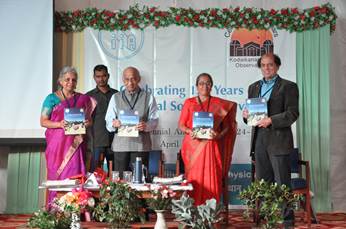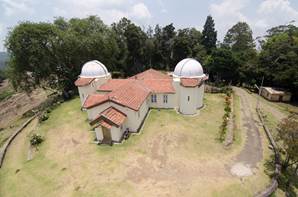The 125th anniversary of the iconic Kodaikanal Solar Observatory (KSO) was celebrated on 1 April 2024 by Indian Institute of Astrophysics (IIA), an autonomous institute of the Department of Science and Technology (DST), to remember the history of KSO, felicitate its scientists, and honour its legacy was a milestone for astronomy in India. The KSO houses a digital repository of 1.2 lakh digitised solar images and thousands of other images of the Sun recorded every day since the start of the 20th century.

Kodaikanal Solar Observatory
A.S. Kiran Kumar, former Chairman of ISRO and Chairperson of the Governing Council of IIA then unveiled the KSO 125 logo for the anniversary celebrations along with a booklet detailing the history and the research highlights of the Observatory. Established on 1 April 1899 by the British, the Observatory has one of the longest continuous daily records of the Sun in the world, and this unique database has been digitised and is publicly available for astronomers from across the globe.

Starting with these celebrations, IIA has planned a number of events over the coming months to highlight the Observatory’s rich history, its diverse achievements, and its ongoing research. which in turn, arose from the Madras Observatory established in 1792. Currently, KSO is operational as a field station under the Indian Institute of Astrophysics, which is an autonomous institution under the Department of Science and Technology.
The Director of IIA, Prof. Annapurni Subramaniam, highlighted the legacy of the observatory and how more than a century of pursuit of knowledge required continuous innovation through multiple generations of technology while transferring skills through the generations of scientists as well. Prof. Siraj Hasan, former Director of IIA and a solar physicist talked about the discovery of the Evershed Effect, an effect observed in sunspots due to radial flow of gas, in 1909 at the observatory. S. Seetha, former Director of Space Science Program Office of ISRO underlined that school and college textbooks need to talk about the KSO to increase awareness among students about its uniqueness.
Kodaikanal Solar Observatory
1st April is also celebrated by Indian Institute of Astrophysics as its Foundation Day, commemorating when it was constituted as an institution under the Department of Science & Technology in 1971. The Foundation Day Lecture for 2024 was delivered by A.S. Kiran Kumar from Kodaikanal on the “Indian Space Program”, where he sketched its history starting with the initial vision of Sarabhai and others of using space technology for socio-economic development of the country, including the unique programs for remote education, providing information to farmers and fishing community, and for disaster warning.
He also spoke about the progress made in various fields of remote sensing, mapping, and communications highlighting the technological challenges that were overcome for the successful Chandrayaan 3 mission, and the future with Gaganyaan as well. The event brought into focus how the Kodaikanal Solar Observatory bears testament to more than a century and half of scientists deciphering the Sun from Indian soil, starting with chasing eclipses, discovering Helium in 1868, to understanding the plasma process in the Sun and the production of prominences and flares. The Visible Emission Line Coronagraph onboard the recently launched Aditya-L1 that was assembled at CREST, IIA and the proposed National Large Solar Telescope in Ladakh led by IIA, continue to build on this rich legacy.





